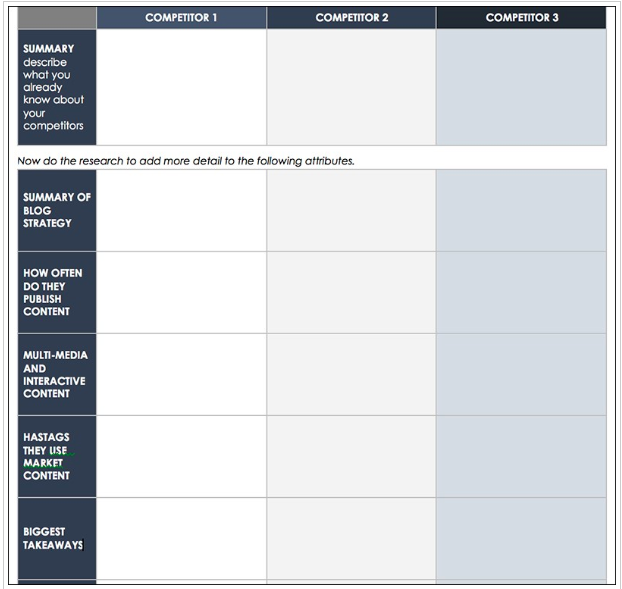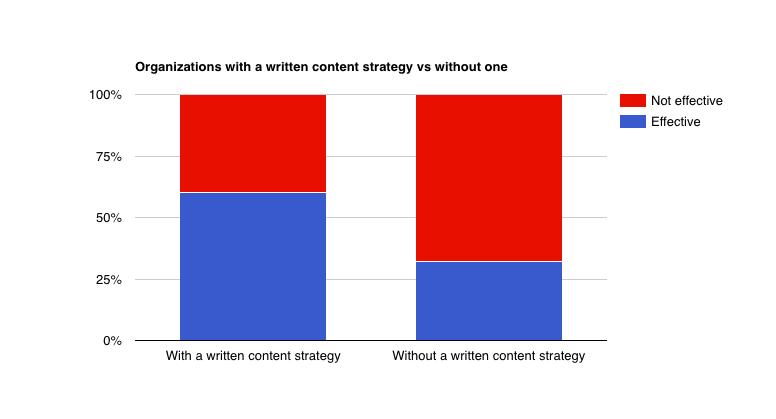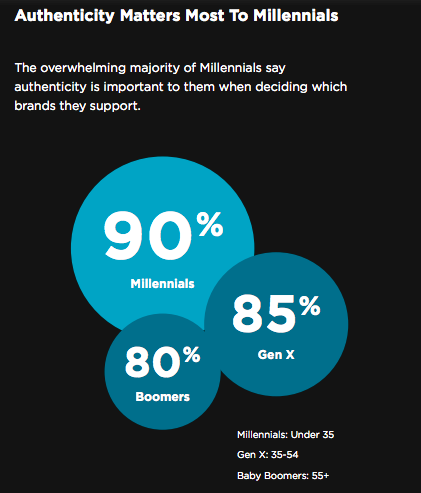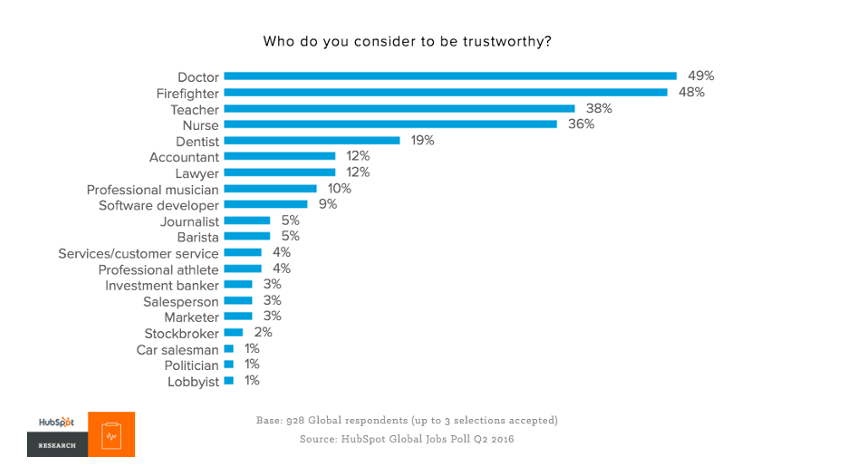There’s no way around it. Being perceived as an authority helps you boost sales. Consumers want to give their money to someone they trust—so they know they’re getting something that’s high-quality.
No one wants to do business with a company that appears disorganized or amateurish. While it takes some determination to become a full-fledged thought leader in your niche, there are some things you can do to convince your audience your voice is worth listening to.
So, what, exactly is it that makes one person an expert over others? In certain fields—it’s experience or an advanced degree, an ability to speak at TEDTalks. In the wilds of online marketing, it’s more about how you brand yourself and back up your claims.
Are you a millennial career coach who specializes in training creative types? Are you a skincare subscription company that sources cruelty-free products? These little specificities set you apart from the crowd and provide a starting point for your content strategy—and for connecting with your audience.
But it’s more than just a good idea. You need to connect with people and prove you know what you’re doing. Keep reading for a look at how to come across as a pro, no matter how long you’ve been in the game.
Be Confident
Projecting confidence is easier said than done. You can’t tell someone to be confident and expect an automatic boss transformation. Still, many business owners lack confidence in their writing ability. They’re struggling to find structure or a voice that connects with their audience.
Instead, consider using a template. Hubspot put together a collection that includes list-based posts, how-tos, and more. So, you can focus on sharing your insights instead of worrying about structure.
And not to worry; if you’re suffering from imposter syndrome or you’re new to the digital space, faking it till you make it is fine, too.
Where in real life, projecting confidence means firm handshakes, good posture, and making eye contact, in your web copy it means standing firm in a different way.
What we mean is, weak writing is wishy-washy. It’s meandering and convoluted. When you write with substance, there’s no room for fluff. Work on creating cogent arguments and leaving out anything that doesn’t reinforce your point.
How to Do This:
- Put your most important information first. Abandon the essay structure and put your main takeaways near the top. Journalists call this the inverted pyramid.
- Back statements with research
- Use concrete examples
- Add facts and figures
- Stay up-to-date on industry trends and current events
- Write fast and edit later
Quote research that supports your claims, and make sure you’re citing the source. Data used to back any points you make shows that you’re not tossing out ideas—readers can see for themselves.
Write Like You Mean It
In addition to backing up your claims with facts and figures, writing with confidence means cutting out the fluff in your articles and choosing your words carefully.
Tentative language doesn’t lend itself to credibility. You sound unsure, like a philosophy student. Speak firmly and use action words, avoiding passive voice and maybes, kind ofs, and sort ofs. Oh, yeah, skip those “if statements” too.
If you don’t have full faith in what you’re saying, why should anyone else bother with your content? Click To TweetA few more tips:
- Use words that paint a clear picture
- Understand the technical side of writing—spelling, grammar, comma usage. Use Grammarly or WhiteSmoke if you need some backup.
- Keep things flowing—While we don’t have time to discuss the ins and outs of developing a great writing style, the best hack is reading the piece aloud. A conversational tone works best in blogging anyway, so make sure your content sounds like someone talking.
- Focus on how your content can inspire action—what is the goal of the piece? How will you tie the call-to-action back to the overarching theme?
Stop Trying to Be Clever
Long words for no reason other than showing off is a big no. The average reader doesn’t care if you’re a human thesaurus, they just want to get to the point. Skip the jargon and the SAT words and instead focus on clarity.
To combat this problem, comb through your copy and highlight any jargon or words that have a more straightforward meaning. From there, replace them with a simpler alternative. If you need help with this, the tool, Hemingway is an excellent resource. Aim for a grade 9 or lower for broad appeal.
Keep Your Competition Top of Mind
What are your competitors writing about? What posts are getting the most shares on social media? While we’re not suggesting you copy your copy, keeping tabs on the posts that resonate and topics you have covered as this will get you far with your content strategy.
Think we’re kidding? This post from Search Engine Watch lays out a solid strategy for monitoring your competitors’ marketing efforts. There are a ton of tools available—think BuzzSumo and SE Ranking, as well as a good old freebie, Google Alerts.
Once you’ve gathered a thick stack of competitive intel, make a list of the topics covered, type of content, and what’s missing from the lineup. That said, simply writing your own version of what’s already out there isn’t enough. Instead, fill in the gaps–cover the topics they’ve missed and improve on what’s already out there.
Keep Your Focus Tight
There are very few authorities who are good at everything. Your blog, and by extension, your social channels and any marketing materials should focus on one niche area. If you run a snack subscription service, you should focus on food. You could branch out into other areas like sustainability or special diets, but everything needs to relate and be on brand.
Authorities have the unique gift of a demonstrable passion for their niche. It’s not so much how much you know; it’s how you share your “thing” with others.
If you’ve started a business, chances are you’re passionate about some aspect of what you do. So, you’re better off than someone hoping to start a blog about, well, something.
Plan, Plan Plan
Don’t plan to fail. You prepare for meetings and events, so you should do the same for your content. While you can’t exactly plan for every little thing that comes along—you have ultimate control over your content.
According to the Content Marketing Institute, 60% of companies that have a written content plan in place are effective in meeting their content goals. Only 32% of those who just talked about their content strategy were effective.
The planning stage means putting together a list of topics you’d like to cover and finding studies and use cases to support your ideas—while it sounds like you’re piggy-backing on someone else’s expertise (I mean, kind of), knowing you’re citing credible sources is a good way to show customers you have good judgment.
- In the planning phase, you’re probably feeling overwhelmed. Start by following a few steps.
- Set goals—Why are you doing this? To drive sales, raise awareness, capture leads? Something else?
- Research your target audience
- Find keywords
- Write down topics
- Create a content calendar
- Outline a few posts at a time
- Write content—aim to publish say, 2, 3, or 5 posts per week.
- Publish and share on social media—use a tool like SproutSocial or Buffer to pre-load social posts to save time.
This example from Social Media Examiner is just a basic Excel sheet. But, something this simple can be a good way to start considering your content mix and planning accordingly.
Tell a Story
Add a little anecdote at the top to draw people in. If you’re making a point about how you others start a business without formal training, then highlight your own experience. Say, “I studied music in college, and now I’m a web developer, here’s what I did to build up my skill set.”
Provide some actionable examples—did you go to a coding boot camp or learn from some YouTube videos? How do you find new clients?
And, it’s okay if you don’t have a story for every blog. Instead, you can include a quote or a surprising factoid for a similar effect. Or, mention a viral article that relates to your business and dive into your thoughts.
Whatever you choose, however, needs to relate to the overarching point you want to make.
Focus on Being Helpful and Authentic
As a business—no matter the industry, the primary measure of success is always going to be sales and leads. It’s about maximizing conversions and capitalizing on new opportunities to earn.
But when the goal is building trust, you need to stop thinking like a salesperson. Stop being all about the “buy, buy, buy.” Instead, create content—be it blogs, podcasts, or videos—that genuinely provide your audience with helpful information.
Your content should highlight the benefit of your service without screaming “please buy now.” Share case studies to show how you’ve helped people in the past. Turn your focus on solving audience problems with how-to guides or blog posts that highlight some common issues.
If you have a software service, try building a knowledge base that shows users how to use your tool for success. Your blog can focus on things like business advice, trends in the marketplace, and answer common questions.
The last part of the equation is being authentic. We know, it’s become a buzzword these days, but authenticity stands to help you become profitable. The “a word” is a big deal among millennials. 90% of this group say that they prefer companies to be “real and organic” as opposed to perfectly polished.
Get Endorsed By an Authority
A social share from someone in your arena is a vote of confidence that inspires others to follow suit and buy. Unfortunately, this is easier said than done. Getting social shares requires some genuine relationship building on your end.
Do some research to identify who the influencers are in your space and make sure you’re following them on social media—liking, sharing, and commenting on their posts. At this stage, do not stick promotional links in the comments section—this will leave a bad taste behind. Instead, make yourself visible and try reaching out via private message or email after it’s clear you’re a follower.
When you do reach out, send a quick note. Something like:
Hi there,
I wanted to let you know I linked to your site in my recent post. If you have some time, I’d love to hear what you think. If you like it, it would be amazing if you could share.
Thanks a lot,
Your Name
X Company
Another way to connect with influencers is asking if you can interview them for your website. While it might be a long shot, interviews are mutually beneficial. The influencer/expert gets to position themselves in front of a new audience. Plus, you get to take advantage of authority by association.
Gather Up the Testimonials
Look, unless you’re a doctor, teacher, or firefighter, trust is hard-won. According to this Hubspot survey from a couple years back, only 3% of respondents believed sales and marketing people to be trustworthy. With the odds stacked against you, you need all the help you can get.
To combat this, you’ll want to ask for some kind of reviews you can put on your website. Ask past customers to share their experience in exchange for a discount or some free product.
It is even better if you can get a trusted customer to participate in a use case article or video.
Wrapping it All Up
Writing content that your audience wants to read is a big challenge for all marketers. Still, with some extra time, effort, and let’s face it, plenty of stats and enthusiasm, building trust with your audience is within reach.
The rule of thumb here is, making sure all information is correct. You can’t say your solution is best, but your customers can. You can provide case studies and show people how to use your product. And, you can be helpful.
That said, if you’re unsure of where to start, Tall Cube can help. We’re a data-driven marketing agency; and as such, we’ll work with you to boost traffic, sales, and your authority, too. Contact us today to get started.





